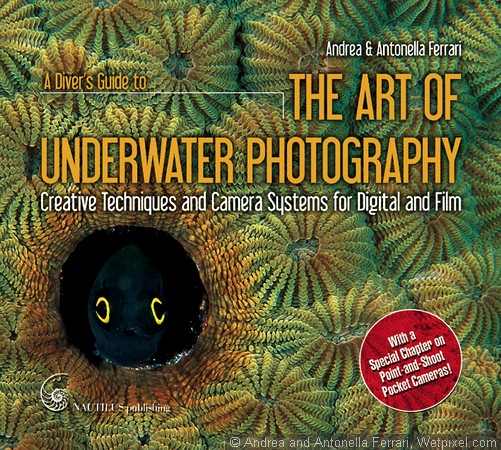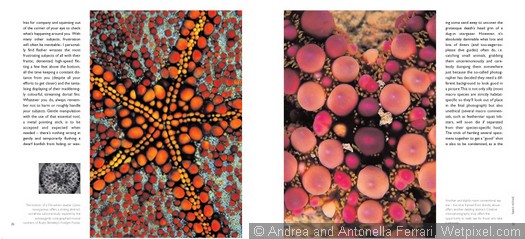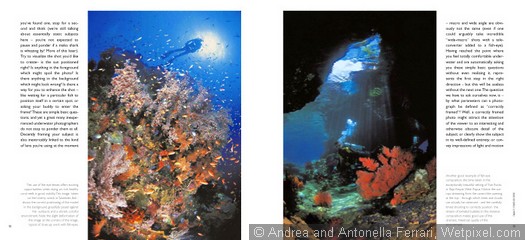Book Review: A Diver’s Guide to the Art of Underwater Photography

Great art is not created by committees or consensus, but by passionate individuals with vision and desire. The Ferraris’ guide to the art of underwater photography is as personal and as opinionated a book on the subject as you are ever likely to read. And all the better for it.
This book gives us a rare insight into the mindset, dedication and imagination involved in creating magnificent underwater images. Although he always seems keen to modestly deny it, Andrea Ferrari is an excellent underwater photographer. While you may not always agree with his well argued opinions all of us will benefit from reading them. I get the impression that the author does not expect us to agree with him all the time, anyway.

Although this book gives advice on many technical aspects of underwater photography it does not attempt to be totally comprehensive and takes a more philosophical approach to the subject. It is a motivational manual that encourages you to strive for better underwater photographs. And shows you the path.
Ferrari’s text, perhaps prose is a more apt word, is individual, warm and highly entertaining. I sat down and read this enjoyable book from cover to cover. The lack of techno-talk makes it a very accessible method to improve your photography. Particularly for the non-technical minded. I really enjoyed Ferrari’s original take on the difficult subject of composition. By drawing comparisons between famous scenes from the silver screen and underwater photos he demonstrates how the shared compositional elements work to communicate consistent messages and emotions.

The images are some of the finest you will see in a guide to underwater photography. About half are the very best from the Ferrari’s own collection, while uniquely the other half come from a cast of 21 guest photographers that includes the likes of Doug Perrine, Tony Wu, Eric Cheng, Charles Hood and Stephen Wong. Some of the guest photographers are good friends of the authors, I’d count myself in the that group, while others the authors contacted out of blue after seeing their images in books, magazines or on the internet. All the images are very well reproduced, which will not come as a surprise to anyone who owns any of the other books by the authors.
I had not see the work of some of the guest photographers before, and it is a pity that the book does not contain links to their websites so that I could see more. Perhaps the Ferraris could provide this as a page on their own website?

The guest images almost make this two books in one. They are ordered to fit in with the themes of the chapters and interspersed with the main thesis of the book, but each is captioned as a standalone. Reading Ferrari’s comments on why each is effective is fascinating stuff. I would have found the book easier to follow if the guest photographer pages were more differentiated visually in the design (perhaps with a different font or background) because I found it easy to lose the main text and accidentally slip into reading about a guest image as I turned the pages.
As for my other gripes, I would have liked to see more technical information about the images, at least including shutter speeds and apertures, which are fundamental tools that contribute to the artistic process of image creation. Also this is a book straddles the digital/film divide offering real world advice on how to manage the switch. The evidence I see on dive boats is that most have switched and this element of the book will be fastest to date. My other comment is that the book is focused entirely on underwater photography in warm tropical seas of South East Asia. Understandable because this area is the preferred studio of the author (and many photographers). However, if you rarely dive in this area you may find the advice in the book less applicable to your own conditions.

But these are minor complaints. A Diver’s Guide To The Art Of Underwater Photography is a large format (25x23cm) 360 page feast of fabulous images and thought provoking and enjoyable writing on taking pictures in the ocean.
If you were only allowed to buy one book on underwater photography, I would recommend a more technical tome than this. However, if you already have a book or two on the subject then this is the perfect accompaniment. I’d go as far as to say that whatever books you already have on underwater photography, then the originality of thought in this volume, allied with the photographic quality and Ferrari’s engaging writing, means this one deserves its place alongside them.